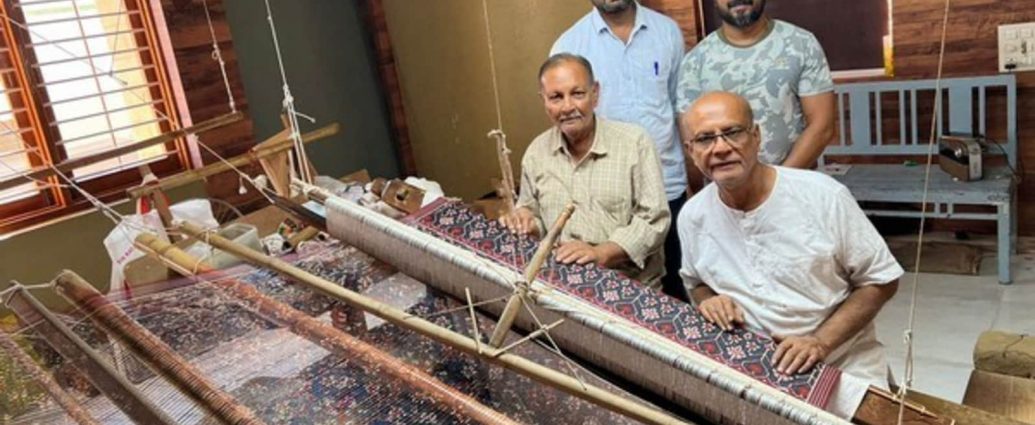The ancient craft of Patola sarees dates back to the 11th century and the Salve family in Patan has been carrying on their legacy of the craftwork for generations. King Kumarpal of the Solanki dynasty had some 700 families of Patola weavers who migrated from Jalna (Maharashtra) to settle in Patan in North Gujarat, and the Salves are among them.
Speaking to ANI, 68-year-old Bharat Salve, one of the eldest members of the family, narrated the history of Patola silk.
“This Patola loom came here in the 11th century when the king wanted to use Patola each day for his poojas. He was a Jain. We still continue to use traditional natural dyes,” Salve said.
What makes Patola stand out from other silks, Salve said, “It is not a saree that carries a printed design. Instead, it is so intricately tied and dyed that creates a design,” sexagenarian said. (Also Read | 8 Beautiful regional sarees of India you must have in your wardrobe)
A genuine Patola saree with the Salves starts from ₹1.5 lakh and can cost upto ₹6 lakh depending on the intricacies.
Rohit Salve, who is in his seventies said, “It takes about six months and around 18-19 processes to prepare the saree. We buy the raw silk from Bengaluru and then multiple processes are followed including bleaching and softening of the silk strands.”
Explaining further, he said on average 4-5 colours are used on the saree and the time to prepare a saree depends upon the number of colours and the intricacy of the designs.
“We need 4-5 workers to prepare a saree and it is all about teamwork. We work on the designing and the tying and dying process. Weavers are centuries old and there has been no machine that can replace this man-made labour,” Rohit Salve said.
44-year-old Rahul Salve gave up the lucrative career of becoming an architect and took up the family tradition. In fact, he is the 28th generation that is into Patola saree weaving.
“We have been in this profession for the last 900 years and I am the 28th generation. Though an architect by profession, I took up the family tradition and have mastered it over the last 22 years,” Rahul told ANI.
With a cheaper version now available and a lot of mixed thread work available, Salves said it is genuinely a concern for the craft which is both rare as well is expensive.
“We have seen that a lot of cheaper versions of the single and double Ikat are available in the market and are being sold under the GI tag. We have not fallen for this and we are not really worried but the only thing is we have to explain to people that genuine Patola sarees cannot be made cheap,” Rahul Salve said.
Salve family Patola sarees on an order basis and is far away from looking at exporting opportunities even though they get NRI orders who take a lot of interest in the Patola handloom.
“We have no monetary demands from the government but we expect that they will do their bit to promote these rare arts and artisans who were keeping these art forms alive,” Rahul Salve said.
The famous Patola handloom of Gujarat came into the limelight recently when Prime Minister Narendra Modi during G20 meeting in Bali, Indonesia gifted a Patola saree to Italian Prime Minister Giorgia Meloni made by the Salve family.
“When the Prime Minister takes rural Gujarat at global stage and gifts our craft to the foreign head of governments naturally becomes a very proud moment for us,” the Salves said.
From 70-year-old Rohit Salve to 37-year-old Savan Salve, nine members of the Salve family including four women, continue their stride to preserve this rare craft.
This story has been published from a wire agency feed without modifications to the text.
